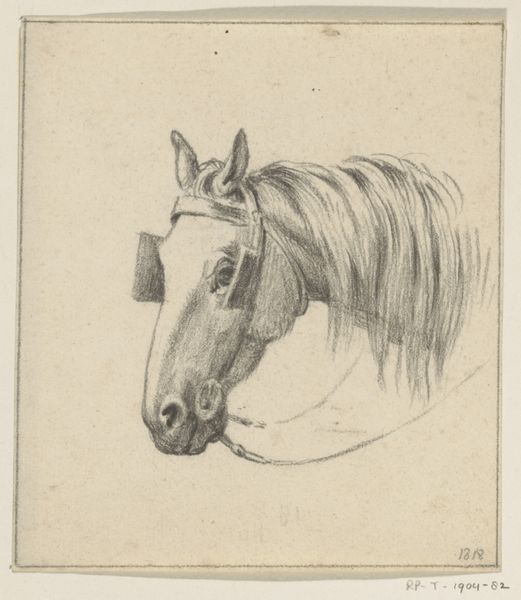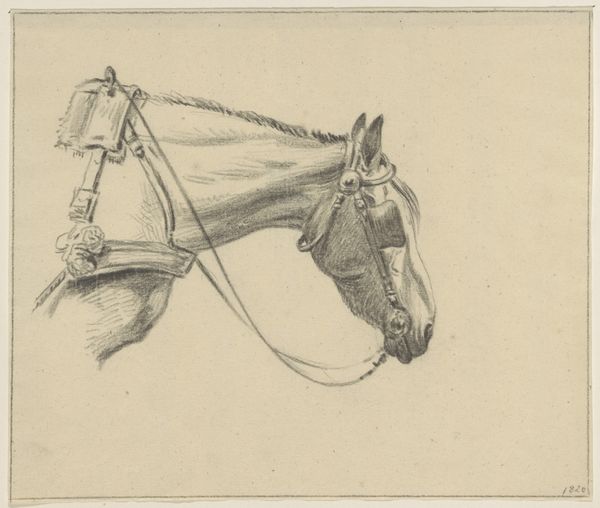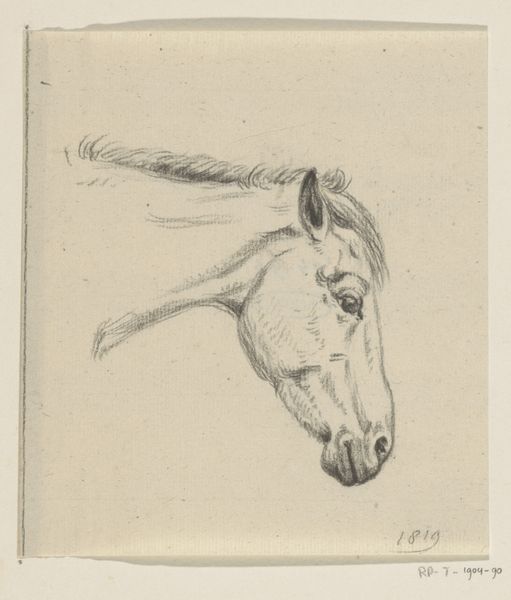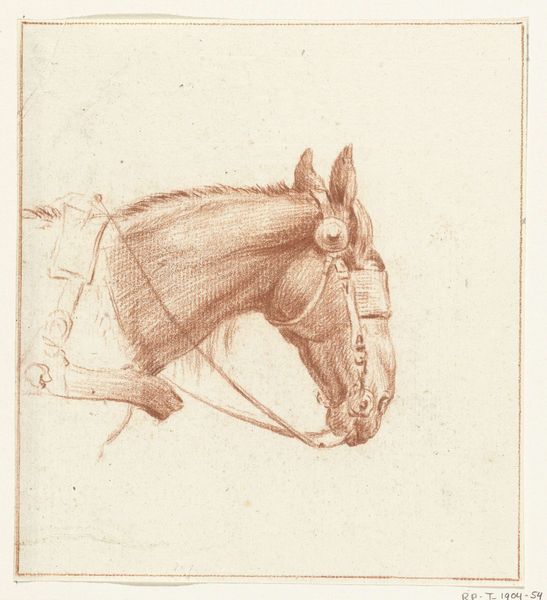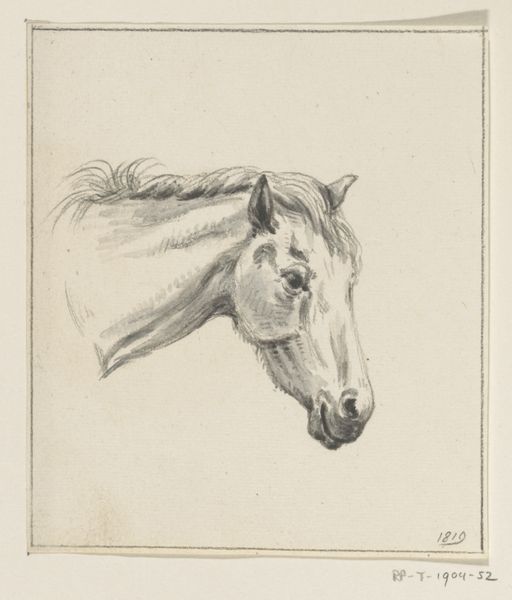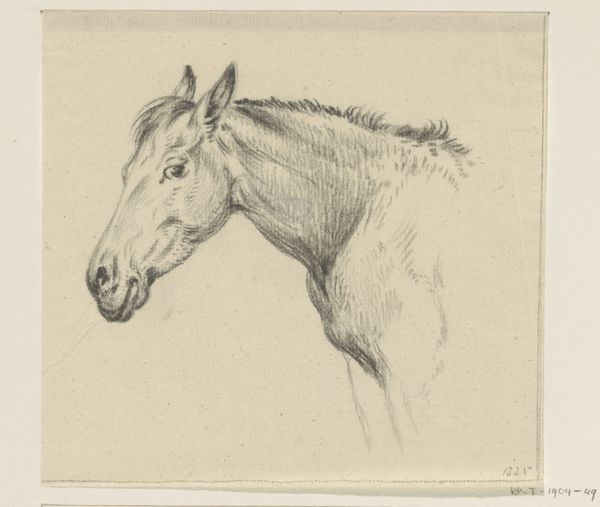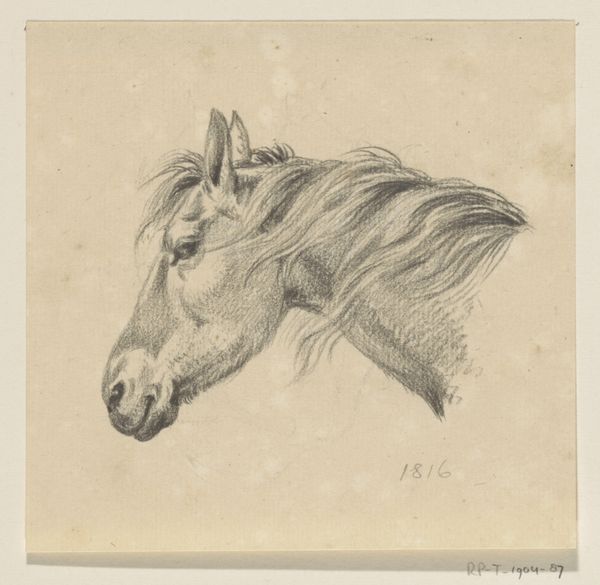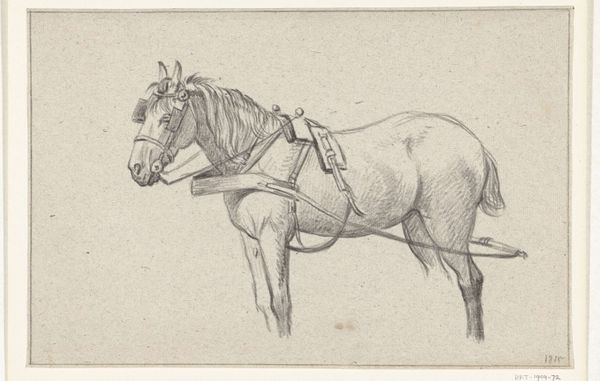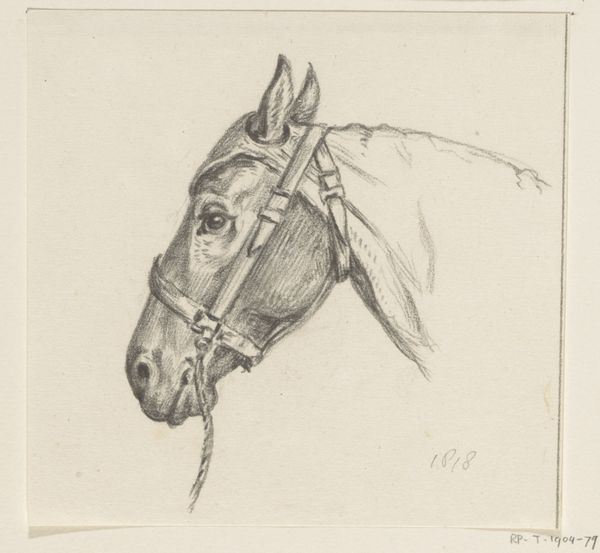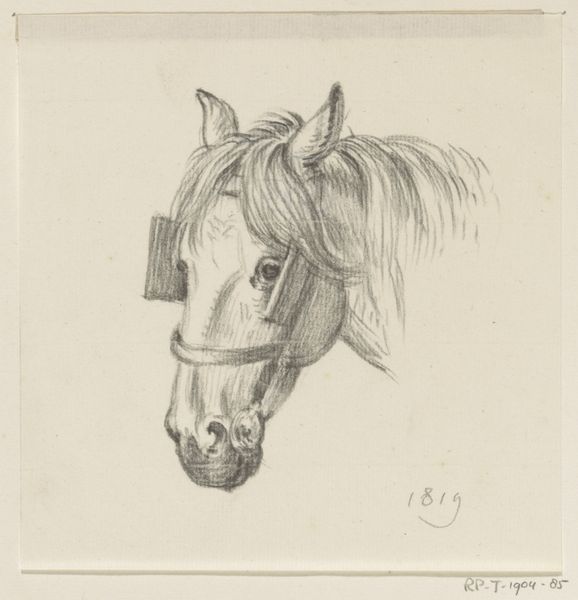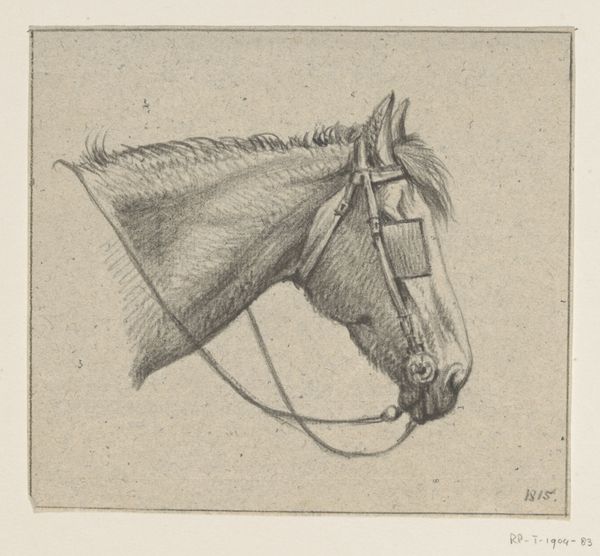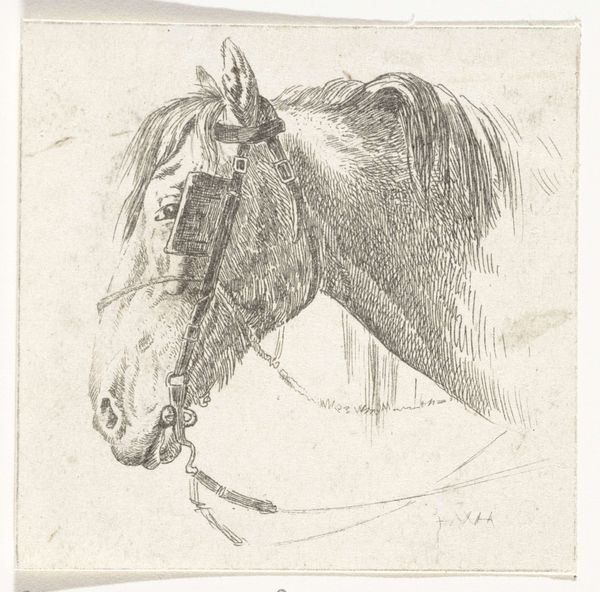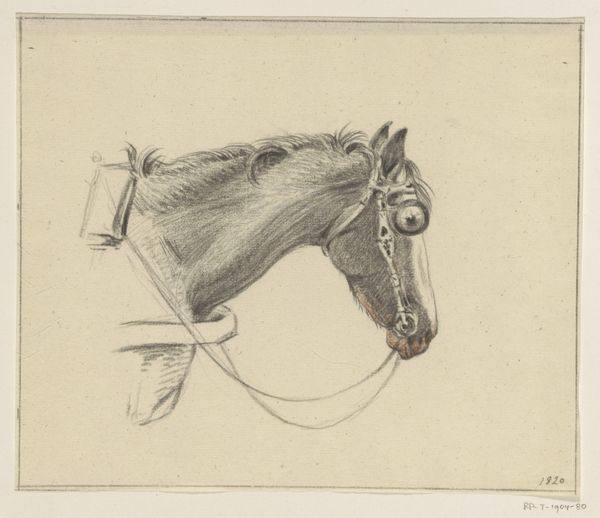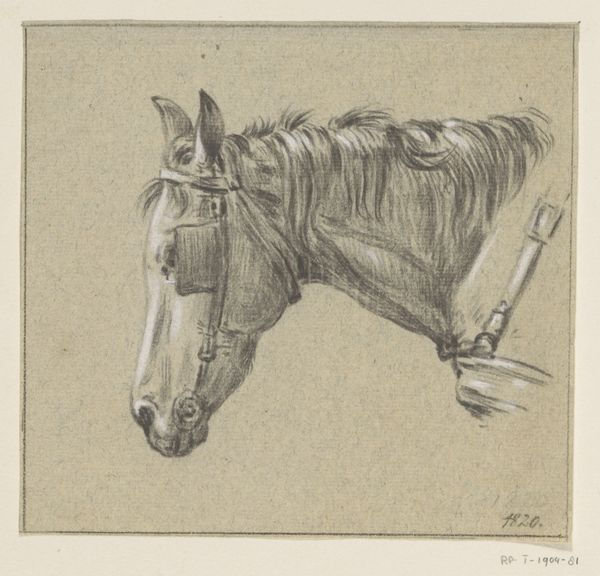
drawing, pencil
#
portrait
#
pencil drawn
#
drawing
#
aged paper
#
toned paper
#
light pencil work
#
pencil sketch
#
old engraving style
#
figuration
#
personal sketchbook
#
romanticism
#
pencil
#
horse
#
sketchbook drawing
#
pencil work
#
sketchbook art
Dimensions: height 109 mm, width 96 mm
Copyright: Rijks Museum: Open Domain
Curator: Welcome. We’re standing before Jean Bernard’s, Head of a Horse with Blinkers, Facing Right, a pencil drawing from around 1815, housed here at the Rijksmuseum. Editor: Oh, what a stunner! It's the kind of sketch that just feels incredibly...present. A little melancholy too, perhaps? Like the horse knows more than it's letting on. Curator: Interesting observation. I’d encourage us to consider the blinkers. They limit the horse's field of vision, placing it, perhaps, into a restrictive system. How does this animal reflect labor relations and power dynamics of the time? Are we looking at themes of control and agency? Editor: Absolutely. The blinders make me think of limited perspectives in general, right? Are we all just horses with blinders, blindly following pre-determined paths? Though there’s also something elegant and graceful about the portrait that lifts it out of purely restrictive connotations, it does leave room for dreams… Curator: It’s hard to overlook the stylistic elements too. The precision of the line work suggests meticulous attention to detail. Consider it in the context of Romanticism, a period when artists like Bernard explored themes of emotion, the individual, and the sublime, often finding these elements in nature. Editor: Totally see that, the details pop, even with it being a pencil sketch. You can practically feel the texture of the horse's hair, the worn leather of the bridle, heck, even the very essence of “horse.” Bernard's really good at what he does. Curator: And this aged paper becomes a character too, signaling the passing of time. It contextualizes the drawing, inviting us to think about how histories are made and passed down, what we choose to remember, and what gets erased in the telling. Editor: Right? Like it’s whispering tales from a different century. I think this work is powerful. It is small and seems quiet but speaks volumes. Curator: Agreed. Bernard's horse is not merely an animal; it’s a lens through which we can examine broader social and historical narratives. Editor: Yep, definitely hoof-prints for thought.
Comments
No comments
Be the first to comment and join the conversation on the ultimate creative platform.
